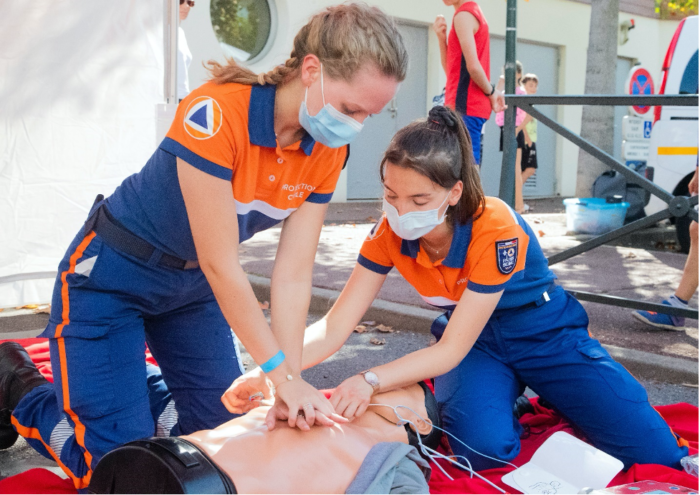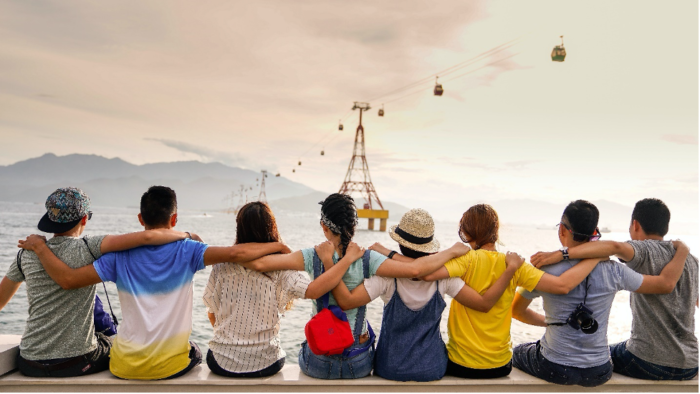
Have you ever wondered despite being digitally linked and being continuously aware of each other – we are slowly being socially isolated? And what are the effects of social isolation on our mental and physical health?
Social isolation is the antonym of social integration. We can understand it as insignificant contacts and a lack of social engagement. Social interaction is essential to our existence since we are social animals. We are biologically programmed to rely on each other for assistance. The new normal brought to us by the courtesy of this digital era and the present pandemic of COVID-19 has left us to encompass working from home, temporary unemployment, online schooling and working, a decline in physical interaction, and fading compassion in our relations with family & friends.
Though we have adapted well to this contemporary state of social isolation, we are not ready for the foreseeable drastic effects of social isolation in our community. A meta-analysis of 113 countries by Daniel L. Surkalim et. al recorded the worldwide prevalence of social isolation. The highest isolation prevalence rate was in Eastern European countries, especially in older adults. They analyzed and summarized data in four main groups:
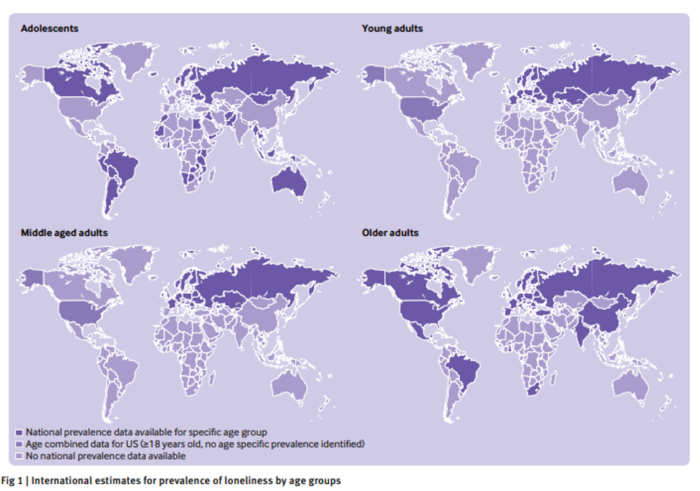
- Social isolation in adolescents (12-17 years): For this group, the prevalence estimates varied between 9.2% to 14.4%. the socially isolated adolescents were least to be observed in South-East Asia and were highest in Eastern Mediterranean.
- Social isolation in young adults (18-29 years): The recorded pooled prevalence estimate for younger adults was 5.3% with high dispersion.
- Social isolation in middle-aged adults (30-59 years): The estimated pooled prevalence for this group was 6.9% with high dispersion.
- Social isolation in older adults (≥60 years): The subgroup variation was significant and the dispersion was high in older adults. The lowest estimated pooled prevalence of 5.2% was observed in Northern European countries, with a subsequently pooled prevalence of 8.7% in Western Europe, followed by 15.7% in Southern Europe, and then the highest observed pooled prevalence of 21.3% in Eastern European countries.
The Centers for Disease Control and Prevention (CDC) has classified loneliness and social isolation as serious public health issues. The first step in preventing and curing a health problem is always to comprehend it, it is crucial to provide public awareness about the physical harms, and psychological consequences of social isolation.
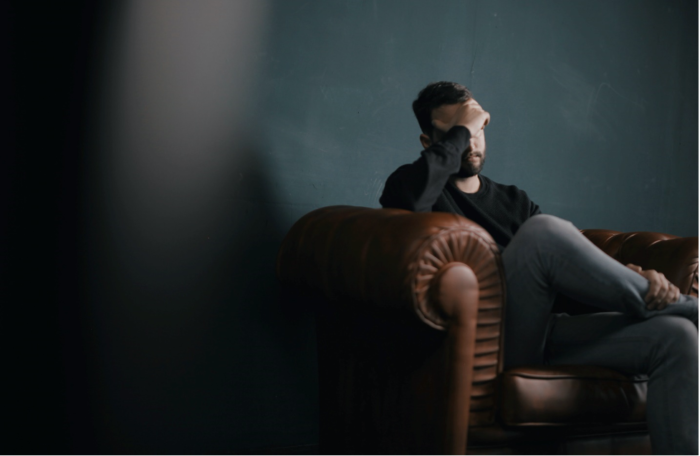
We will go through the groups of individuals most affected by social isolation, the impact of social isolation on mental and physical health, its contributing factors, precautionary measures, and effective tactics. Awareness of this subject will not only keep you physically sound and mentally sane in this pandemic-afflicted-digital era but will also capacitate you to help others afflicted with social isolation.
To whom does social isolation affects the most?
The repercussions of social isolation affect individuals of all ages and social strata. However, some groups of individuals are more likely to be affected by social isolation.

- Social isolation among refugees and immigrants is one of the major concerns. Human mobility comes with separation from friends and family, language obstacles, economic instability, cultural challenges, racism, and discrimination. These challenges put immigrants and refugees at risk of social isolation.
- Marginalized communities like LGBTQIA+ individuals, minorities (both racial or ethnic), and others who endure discrimination and stigma regularly are likely to be subjected to social isolation.
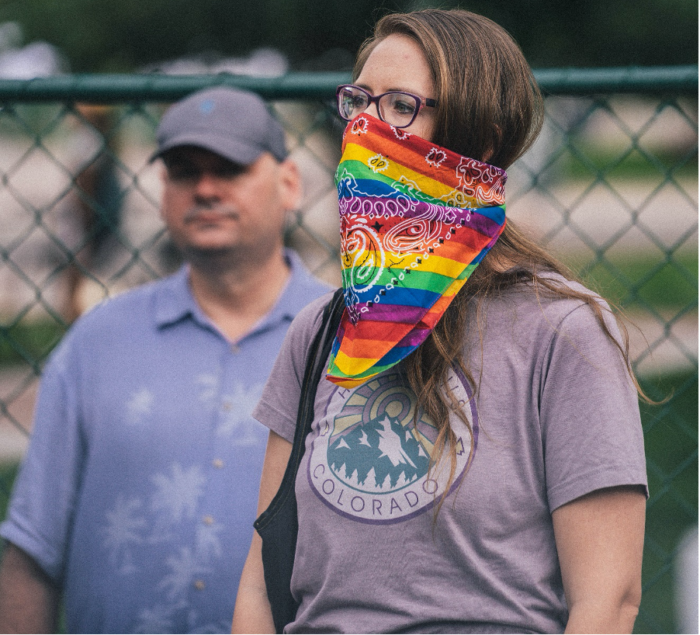
With the increase in age the social circle decreases. The elderly population faces many conditions that contribute to the social isolation in their life. Besides living apart many health conditions (hearing, vision loss, chronic illness, etc), generational gap, and loss of their age-fellows can contribute to the social isolation in old folks. They are emotionally and cognitively vulnerable. A study by Julianne Holt-Lunstad analyzed national data samples of the USA and concluded that older individuals are comparatively more affected by social isolation than any other age group. According to research by James Lubben, et. al elders of the urban community were comparatively more affected by social isolation/loneliness rather than the older folks dwelling in rural areas.
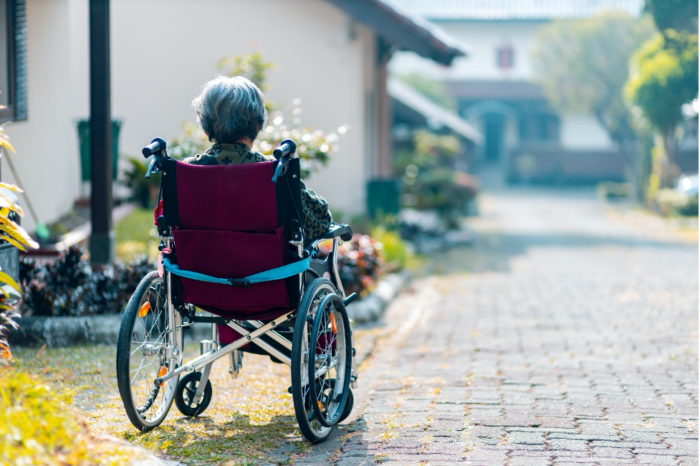
This pandemic has physically isolated people. The worldwide quarantine imposed by WHO has indeed been crucial in our fight against COVID-19, however people who have been quarantined and those operating at the forefront to combat the outbreak – are likewise at risk of social isolation.
How social isolation affects mental and physical health:
Social solitude and our brains do not go along. Although the relationship between social isolation and major medical disorders is not entirely understood, there are enough pieces of evidence to suggest it exists. Following are some outlines of well-known harms and implications of social isolation on our physical and psychological well-being.
The effect of social isolation on the Brain:
It has been discovered that social isolation and loneliness can directly hinder and damage brain structure, function, and cognition. The following brain regions are notably impacted, according to studies already conducted:
- Social isolation effects on the hippocampus: The brain’s hippocampus plays a significant role in controlling how we react to stress. According to research, those with smaller social networks have higher cortisol levels, which are related to stress.
- Social isolation effects on the amygdala: People with an active social life may have a higher volume in this section of the brain, which is thought to be vital for establishing memories. Extensive research has proved that acute social isolation results in the deterioration of cognitive function.
- Social isolation effects on the prefrontal cortex: This area of the brain is crucial for memory, decision-making, and social behavior. According to studies, this area’s volume and function are diminished in the absence of frequent social interaction.
- Social isolation can affect our ability to remember things and process information. There is even proof that social isolation hastens cognitive aging, and it has been linked to a higher incidence of dementia. According to research by Angelina R Sutin et. al social isolation can cause up to a 40% increase in dementia risk. Robert S. Wilson et. al studied that person who experiences loneliness has a more than doubled risk of developing dementia that is associated with Alzheimer’s disease.
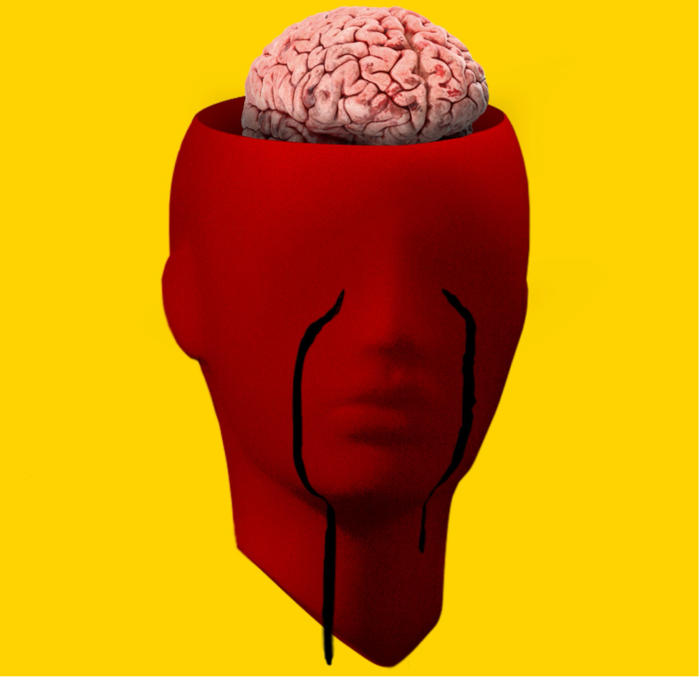
The effects of social isolation on the neuroendocrine system:
Perceived social isolation has direct and indirect effects on our nervous-endocrine coordination.
- Social isolation causes aberrant stimulation of the HPA (Hypothalamic-Pituitary-Adrenocortical axis), a critical element of the endocrine system.
- A link between social isolation and elevated catecholamine levels in the blood has also been proposed by a study based on African Americans, Caucasians, and Latino American populations.
- Researchers have discovered that people who are socially isolated for an extended period have lower cellular immune system competency.
- People who lack social support have higher cortisol urine levels. Another study observed the presence of cortisol in the undergraduate students’ saliva, who were experiencing chronic loneliness.

Genetic effects of social isolation:
Individuals who have encountered extended periods of perceived social isolation are at risk of consequential genetic alterations.
- Social isolation reduces the genetic expression of the glucocorticoid-production controlling gene.
- Substantial production and activation of proinflammatory mediators, as well as downregulation of the inflammation-regulating markers, were observed, notably in middle-aged and elderly people.
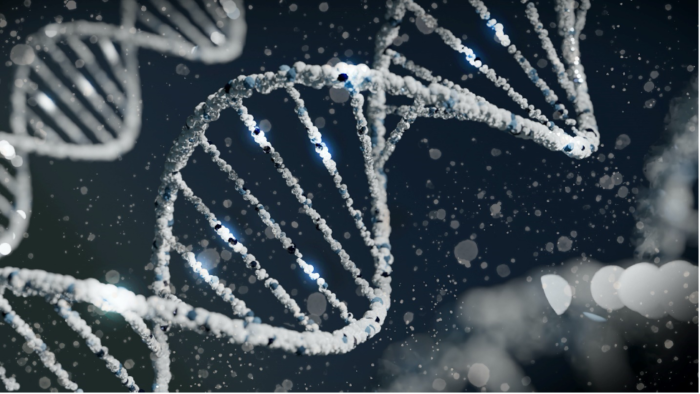
Social isolation and behavioral/psychological disorders:
Isolation comes with many behavioral/psychological disorders. Some of these are listed below:
- Many researchers have shown a link between loneliness and depression. According to a prospective study, loneliness in early infancy from the ages of 5 to 9 years is predictive of depression later in life.
- A negative attitude is also associated with social isolation. The isolated person struggles to articulate positive sentiments.
- In older adults, social isolation depreciates the inclination to participate in healthy physical activities.
- In adults, perceived social isolation is associated with increased suicidal tendencies. According to a study, the frequencies of suicidal thoughts in socially isolated and socially active people are 21% and 2.5% respectively. While the likelihood of committing suicide in socially isolated and socially active individuals is 8.4% and 0.7% respectively.
- Research on isolated young adults concluded that they exhibited extreme sleep restlessness, along with frequent periods of wakefulness. Isolated individuals also have to struggle with daily exhaustion and dysfunction as a consequence of their sleeplessness at night.
- Loneliness is associated with higher anxiety, and stress – especially in the morning.
- Long-term isolation can have also a negative impact on one’s sleeping pattern and dietary behavior. Reduced capacity to regulate eating, increase in difficulty in focusing and doing complex tasks.
- Apathetic attitude, impaired memory, inadequate self-care/self-neglect, confusion, and extreme emotional swings, are some everyday struggles stories of a socially isolated person.

The impact of social isolation on the Cardiovascular system:
Social isolation has adverse effects on our cardiovascular system. Social isolation has been stated as a contributing factor to increased cardiovascular disease (CVD) related mortality and morbidity.
- According to epidemiological studies undertaken at Newcastle University, a lack of social relationships increases blood pressure and the likelihood of stroke and coronary heart disease (CHD).
- According to several epidemiological studies, the chances of developing hypertension, coronary artery disease (CAD), and heart failure increases in individuals lacking social support.
- An absence of social connection also triggers the faster onset of atherosclerosis and a higher incidence of significant cardiovascular events such as myocardial infarction or stroke, and it also increases the risk of CVD-related mortality in those who already have one or more of these illnesses.
- Animal experimentation has revealed that social exclusion raises the probability of type 2 diabetes and obesity.
- These very same isolated animals were also reported to develop abnormal inflammatory reactions, cardiovascular diseases, and elevated stress responses.
- The extreme stress reaction caused by social isolation may place an additional strain on the cardiac and systemic vasculature, resulting in organ dysfunction. Human-based studies have concluded that persons suffering from social isolation have increased blood pressure and heart rate responses to stressful conditions, as well as a very sluggish recovery period.
- These isolated individuals also have autonomic abnormalities, exacerbated inflammation, elevated risk of coronary arteries calcification, and considerable left ventricular hypertrophy.
Contributing Factors of Social isolation:
In this digital era, social media has its role in keeping people so much engrossed in the digital connection at the cost of a true physical connection. However, some other conditions also are factors contributing to complete social isolation that eventually affects our mental and physical wellbeing.
- Covid-19 enforced physical distance: Quarantining was one of the COVID-19 safety measures. While quarantining is effective at preventing the spread of contagious diseases, it is currently one of the main causes of social isolation.

- Abusive childhood or lack of parental support increases the likelihood of social isolation later on in life.
- Losing loved ones: Isolation following the death of family members or friends is a common cause of social isolation, particularly in seniors who have experienced the loss of numerous loved ones during their lifetime. The state of mourning can make life dull and drab for them. It becomes hard for them to socially reconnect with other people or re-make any social associations.
- Living apart: People who reside in isolated places or who are apart from their loved ones and acquaintances owing to any geographical barrier due to work obligations (such as military service, for example) are more subjected to social loneliness than those living in close geographical areas.
- Health conditions and limitations: Difficulty in understanding others, inability to share personal sentiments, lack of physical mobility, or any other health condition – make it hard for the sufferers to have social interactions. Some individuals who have physical disabilities feel insecure about their appearance or health condition, which may make them disinclined to socially interact. Experiencing health problems can make socialization difficult.
- Abusive relationships: Intimate partner abuse can drag the victim away from other people. Most often these individuals do not open up to their relatives, friends, or colleagues because they are being harassed or hesitant to expose their genuine condition. Thus, facing social isolation or mental loneliness despite being surrounded by people.

- Unemployment: People may withdraw themselves out of shame after losing their jobs or not being able to find new ones.
- Social isolation is commonly associated with psychological issues such as anxiety, depression, and low self-esteem, but social isolation can also be brought on by these mental conditions.
How to reduce the effects of social isolation:
The best way of getting out of social isolation is to engross yourself in self-care. Following are some small activities, routine habits, and minimal steps that can rapidly ameliorate your isolation/loneliness.
- Take part in soothing and relaxing activities. Exercising, studying, meditating, writing, and indulging in sports will keep you busy in your alone time.
- Maintaining personal hygiene, eating nutritious meals at regular intervals, and establishing a routine will help you relieve the stress regarding social isolation.
- Maintaining a work-rest balance will also help you mitigate this condition.
- Limit your time spent watching, reading, or listening to news that causes you anxiety or distress. Look for the latest information at particular times of the day, once or twice every day if required. Consider how much time you spend each day in front of a screen. Make frequent breaks from screen-based activities.

- It is essential to maintain social contact. So, if your activities are restricted, establish daily interaction with those close to you via phone or in person.
- Alcohol intake is related to the worsening of psychological conditions, which is why it is better to reduce your alcohol intake or abstain entirely.
- Computer games are a fun way to pass your time, it’s easy to spend too much time playing them when you’re stuck at home for an extended amount of time. However, one should maintain a healthy balance of both online and offline pursuits in one’s routine.
- If you are afflicted by a mental illness and are undergoing mental health therapy of any kind, be sure to keep taking your medication as directed, have a plan in place to refill your prescription supply, and should know whom to contact for assistance if your mental health begins to decline.
- Keep in touch with those who are important to you. Talking to your loved ones and spending quality time is the best way to avoid social isolation.
- If you’re receiving treatment for alcohol or substance abuse, you should be aware that social isolation may exacerbate feelings of dread, anxiety, and stress, which can increase the likelihood of relapsing, abusing drugs or alcohol, disengaging from treatment, or failing to adhere to treatment plans.
- Acknowledge your feelings: While you are experiencing it, it may appear easier to ignore your sentiments, particularly if you do not even have someone to communicate with. Let yourself have enough room to acknowledge that things are challenging. If required, consult a psychologist.
- Take a step outside. Outdoor activities are beneficial to your health both mentally and physically. They help elevate emotional challenges and increase socialization. Daylight has also been found to boost your mood, and vitamin D from sunlight can help relieve anxiety and depression.
Final words
According to Aristotle:
“Man is a social creature, he/she is unable to survive in solitude because the lack of human connections eliminates essential criteria for the construction of one’s personality and the use of reason.”
Though physical isolation (quarantine) is critical for controlling the transmission of COVID-19, humans are not “suited” to keep isolation for a length of time. The human race thrives on the diversity of social connections. Social isolation affects a broader spectrum of systemic functions, culminating in distorted and counterproductive reactions that contribute to various disorders, diseases, and ultimately morbidity. Generally, the impacts of perceived social isolation on health might be either direct or indirect, with the latter being more detrimental. Extensive studies indicate that perceived social exclusion has a complex dynamic effect on physiological and mental performance. Thus it is necessary to be capable enough of coping with social isolation. It is only by personal efforts, community cooperation, and government-level intervention that we can cope with this problem efficiently.
Feature by: Syeda Maryam Hassny
Author Image Attribution: Syeda Maryam Hassny
Find out how our CONSULTANCY can help you with your Content Writing, Digital Marketing and PR requirements HERE.
Check out the latest diaspora, migration and diplomatic related Jobs HERE.
RELATED NEWS AND STORIES

